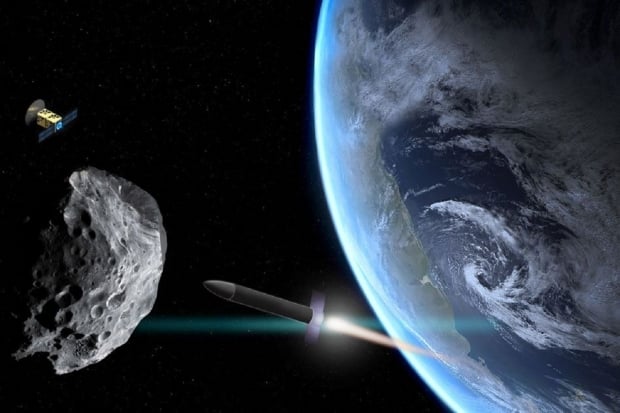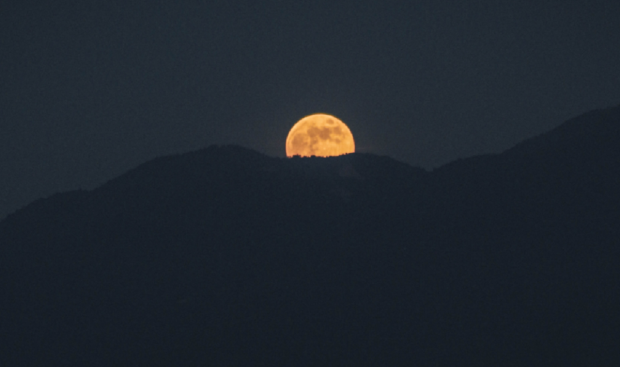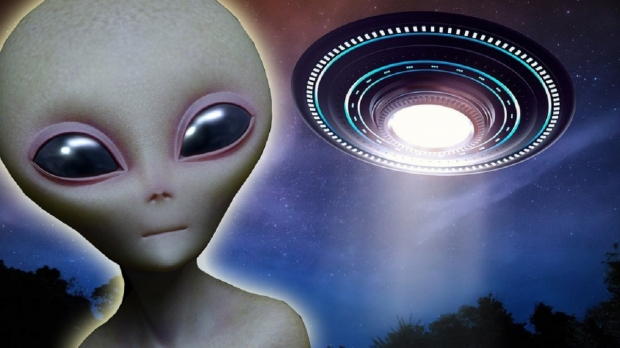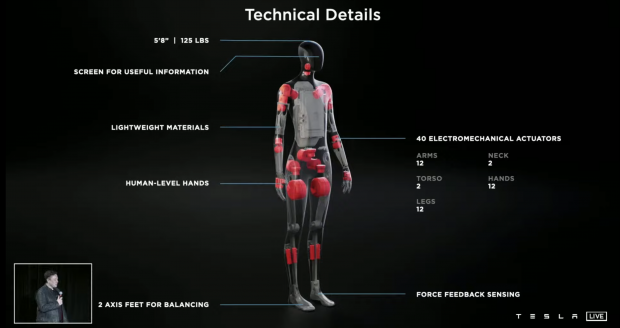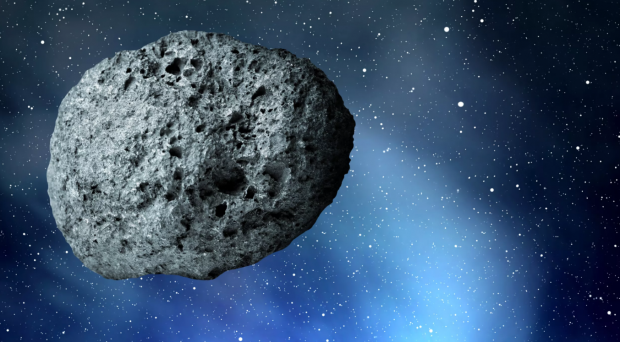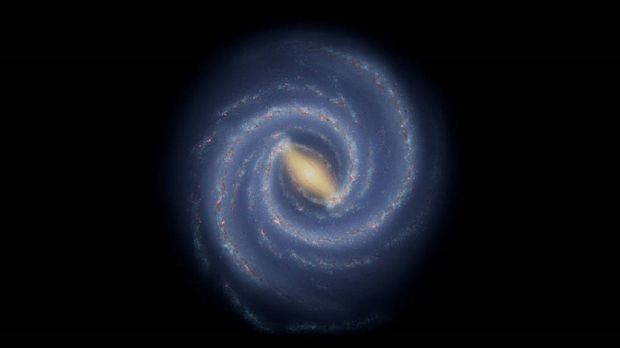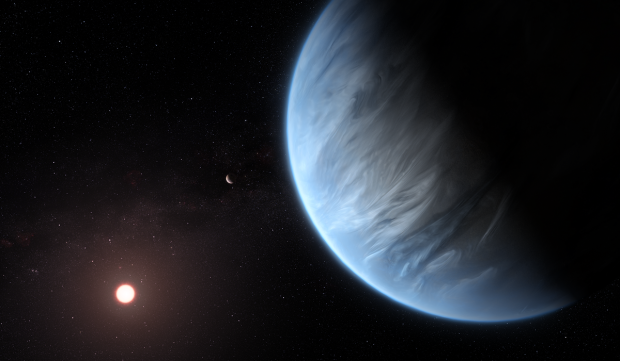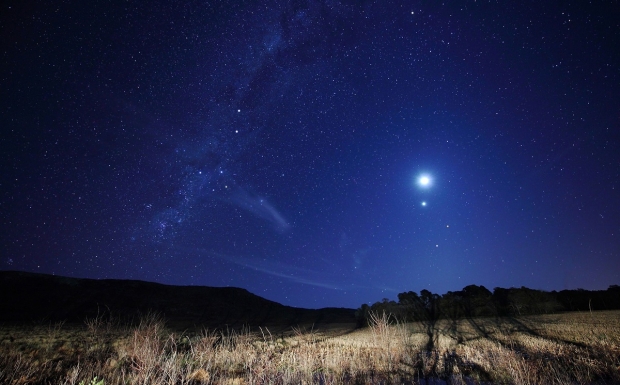Science, Space, Health & Robotics News - Page 290
NASA will attempt to deflect an asteroid, impact to happen next fall
NASA is going to attempt to deflect an asteroid with something the space agency has been working on for more than two years.
NASA calls it the "Double Asteroid Redirection Test," or DART for short, and the mission involves NASA launching a spacecraft that will rocket towards the Didymos binary asteroid and collide with it. NASA wants to test if the impact of the spacecraft colliding with the asteroid will be enough to alter its course. It should be noted that the asteroid doesn't currently pose any threat to Earth and that NASA is purely conducting this mission for research purposes.
According to NASA's latest update on DART, the spacecraft recently received solar arrays that will be a core component to getting the spacecraft all the way to the Didmos asteroid system. The spacecraft will travel for ten months to reach the asteroid system and will launch aboard SpaceX's Falcon 9 rocket this November. When the spacecraft collides with the asteroid, it will be traveling at around 15,000 mph, and NASA will have Earth-based telescopes aimed at the asteroid for clear observation.
Continue reading: NASA will attempt to deflect an asteroid, impact to happen next fall (full post)
One of 2021's rarest Moons is happening this week, the 'Blue Moon'
Over the weekend, you will be able to look up into the night sky and see one of the rarest full moons of the entire year.
So, what is a Blue Moon? The name "Blue Moon" was given to the moon for how extra full it looks in the sky during a certain period of time during the year. As for an official definition, a moon is deemed a "Calendrical Blue Moon" when there's a second full moon within the same month. Additionally, there is a "Seasonal Blue Moon", which is when there is a second full moon within an astronomical season, such as the Fall Equinox, the Winter Solstice, the Spring Equinox, and the Summer Solstice.
As for August's Blue Moon, it will be at its peak on Sunday, August 22, at at 8:02 a.m. Eastern, however, it will still be visible on the night of August 21 for those that wish to stay up late rather than getting up early on August 22. It should also be noted that the moon won't actually appear a blue color, which is no doubt disappointing for some excited people. If you are interested in reading more about this story, check out this link here.
Continue reading: One of 2021's rarest Moons is happening this week, the 'Blue Moon' (full post)
Intelligence official says she met with aliens at their hidden US base
A woman has conducted a news conference in front of the Lincoln Memorial in Washington, D.C, where she said that she has met aliens at their base in the United States.
Angelia Lynn Johnston, who is going by the alias Anjali, held a news conference in front of the Lincoln Memorial where she explained that she has been in contact with aliens at their base located in the Mojave Desert. Johnston also claimed that she will be bringing astronauts and scientists to the secret base to meet with the "higher beings".
Johnston also claims that she is a retired defense intelligence officer who met two strangers who showed her the tunnels to the alien base. Upon entering the tunnels, Johnston says she met two alien life forms from two separate races who communicated with her telepathically (via her consciousness). The news conference was produced by TT Products, who will be following up with Johnston on her story.
Continue reading: Intelligence official says she met with aliens at their hidden US base (full post)
Elon Musk announces Tesla is BUILDING A ROBOT in human form
Elon Musk hosted his new Tesla AI Day today, and the huge multi-hour show is worth a watch and has some incredible technology that was teased -- but one of them is that Tesla is building its own robot, the Tesla Bot.
The new Tesla Bot is 5'8" and weighs 125 pounds, it is built from "lightweight materials" and has "human-level hands". There are 40 electromechanical actuators through the arms, neck, torso, hands, and legs which will make the Tesla Bot the most human-looking and moving robot yet.
Inside, there's next-gen AI inside with Tesla's FSD (Full-Self Driving) computer inside of the Tesla Bot, with autopilot cameras feeding into neural networks with neural net planning allowing the robot to be the most advanced robot on Earth. Musk said that they wanted to build a robot that would navigate the world that was built for humans, but they made it small enough and weak enough that you'll be able to overpower it or outrun it -- probably.
Continue reading: Elon Musk announces Tesla is BUILDING A ROBOT in human form (full post)
Top engineer for Jeff Bezos' Blue Origin switches jersey to SpaceX
A top engineer that was working on Jeff Bezos' Blue Origin lunar lander project has changed team over to Elon Musk's SpaceX.
The news of the lead engineer for Blue Origin's lunar lander leaving to join SpaceX comes after Jeff Bezos' Blue Origin had its protest denied by the US Government Accountability Office (GAO) to overturn NASA's decision to award a $2.9 billion contract to Elon Musk's SpaceX for the construction of a new lunar lander. The lead engineer is named Nitin Arora and announced his transition to SpaceX via a LinkedIn post, where he said, "Friday (August 13th) was my last day at Blue Origin."
Adding, "It was one hell of a ride working on the lunar program. Really honored that I got a chance to work with and lead incredibly smart, passionate people over last three years ... Next stop, SpaceX!" After the decision the GAO made, Blue Origin has been swinging at SpaceX's proposed plan to get humans back on the moon by posting infographics that compare its own methods to SpaceX's. If you want to read more about the rivalry between SpaceX and Blue Origin, check out this link here.
Continue reading: Top engineer for Jeff Bezos' Blue Origin switches jersey to SpaceX (full post)
Asteroid 4,500 feet wide is approaching Earth this weekend, says NASA
This weekend an asteroid that NASA deems as potentially dangerous will make an approach relatively close to Earth.
On August 21 at around 11:10 a.m EDT, the asteroid named 2016 AJ193 that is estimated to be approximately 4,500 feet in diameter, will fly past Earth at more than 58,000 miles per hour. NASA has classified the asteroid as potentially hazardous. However, the asteroid will actually pass by Earth at around nine times the distance between Earth and the moon.
NASA's Center for Near-Earth Object Studies (CNEOS) has classified more than 27,000 near-Earth asteroids, as of August 15. CNEOS says that around 1,000 of these near-Earth asteroids are larger than 3,280 in diameter. As for 2016 AJ193, its orbit calculates to a fly-by Earth around every six years. CNEOS states on its website that "the threat to any one person from auto accidents, disease, other natural disasters and a variety of other problems is much higher than the threat from NEOs (Near Earth Objects)."
Continue reading: Asteroid 4,500 feet wide is approaching Earth this weekend, says NASA (full post)
NASA discovered that our Milky Way galaxy has a 'broken' arm
NASA has discovered something that they have overlooked about the Milky Way galaxy, the galaxy we live in.
Due to Earth's position in the Milky Way galaxy, researchers have a difficult time discovering new things about the galaxy, but that doesn't mean it never happens. According to a new study published by NASA, the Milky Way galaxy is a spiral galaxy, and one of its spiral arms has a "break" in it, much like a splinter protruding from a piece of wood.
NASA researchers used data acquired from the European Space Agency's Gaia mission and found that the broken arm spans around 3,000 light-years. The location of the break in the spiral arm contains some of our galaxy's most incredible spectacles, such as the Pillars of Creation, Omega, Lagoon, and Trifid nebulae. If you are interested in reading more about this story, check out this link here.
Continue reading: NASA discovered that our Milky Way galaxy has a 'broken' arm (full post)
Ancient Pompeii tomb found, contains best preserved human remains ever
Researchers have uncovered an ancient tomb in Pompeii, revealing what is now considered the best-preserved human remains from the tragic disaster.
In 79 A.D, the Roman city of Pompeii was covered in volcanic ash, and the air was polluted with toxic gas as the neighboring volcano Mount Vesuvius erupted. The entire city was buried under ash from the eruption, preserving many parts of it for thousands of years. Now, archaeologists have turned it into a large archaeological site. According to reports, one recently conducted dig uncovered human remains from inside a tomb within the Porta Sarno necropolis.
The preserved human was a man named Marcus Venerius Secundio, and his skeleton was clearly in remarkable shape as the skull still has some strands of white hair as well as an intact ear. The location of where the tomb was found holds significance as it was in what was once considered a prestigious part of the city, the main eastern entrance.
Continue reading: Ancient Pompeii tomb found, contains best preserved human remains ever (full post)
Researchers have honed in on a possible habitable Earth 'twin'
Researchers are getting better and better at spotting exoplanets, and now according to Brazilian researchers, an instrument is on the verge of discovering an Earth "twin".
The study was published in the Astronomical Journal and explored how a new spectrograph called Espresso that was installed Very Large Telescope located in Chile could discover exoplanets that have a similar mass to Earth and are orbiting a star similar to how Earth is orbiting the Sun. The group of researchers observed a star named HIP 11915 for 60 nights. The star is located 175 light-years from Earth, and the reason the researchers chose this star is because it has a planet that is analogous to Jupiter.
The researchers were able to acquire reliable measurements of the radial velocity. However, to confirm their findings, the researchers need to observe the exoplanet complete one full orbit around its local star. By measuring the radio velocity of exoplanets, researchers are able to determine the inclination of the planet's orbit around its local star, which then allows them to determine the mass of the planet.
Continue reading: Researchers have honed in on a possible habitable Earth 'twin' (full post)
Our largest planet will be a big spotlight in the night sky this week
The largest planet in our solar system will appear as a bright light in the night sky this week, and you'll be able to see it with or without a telescope.
The largest planet in our solar system is Jupiter, and this week you will be able to see the planet reach opposition in its orbit. The term "opposition" means that Jupiter is opposite the sun from the perspective of Earth, and officially the planet will reach opposition on August 19. However, this space event isn't just for one night, as Jupiter will be clearly visible in the night sky for the remainder of August.
It's recommended that if you have an old telescope to laying around to take this opportunity to check out the largest planet in our solar system. As AccuWeather reports, most telescopes are powerful enough to be able to show Jupiters four largest moons; Europa, Io, Ganymede, and Callisto. If you are interested in reading more about space news, NASA's Hubble Space Telescope recently captured an image of a space "furnace", check that out here.
Continue reading: Our largest planet will be a big spotlight in the night sky this week (full post)


